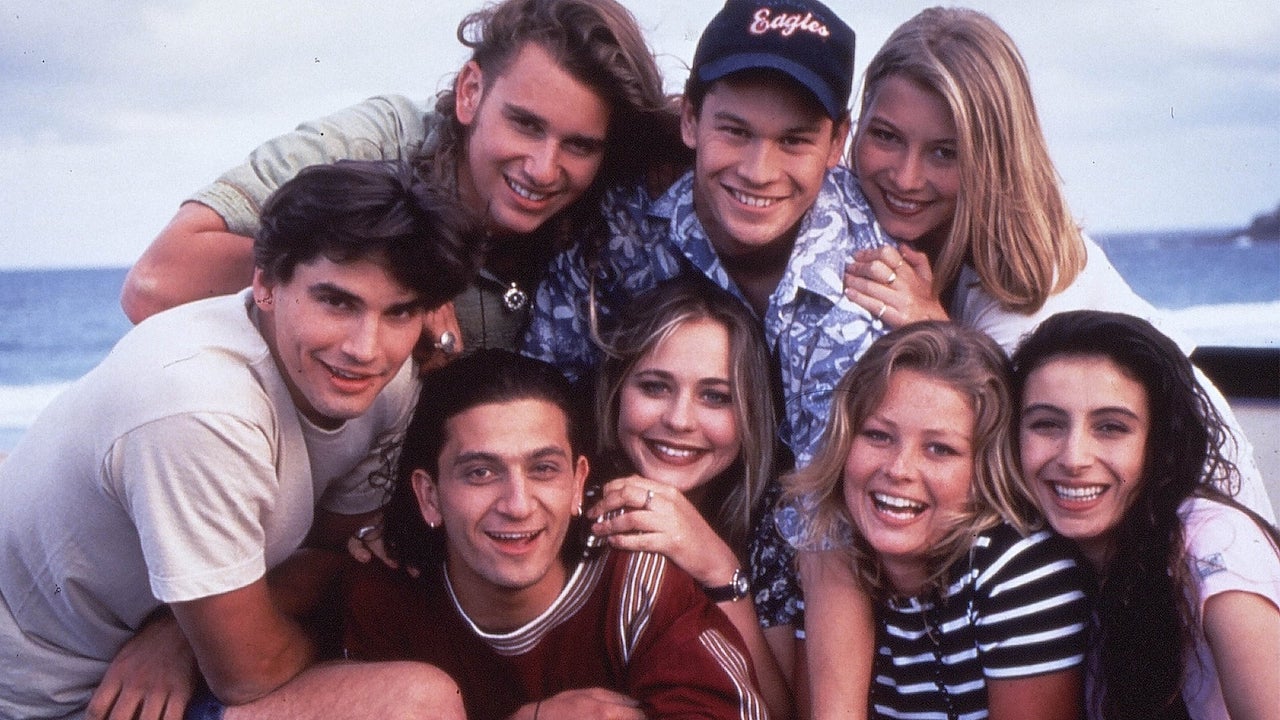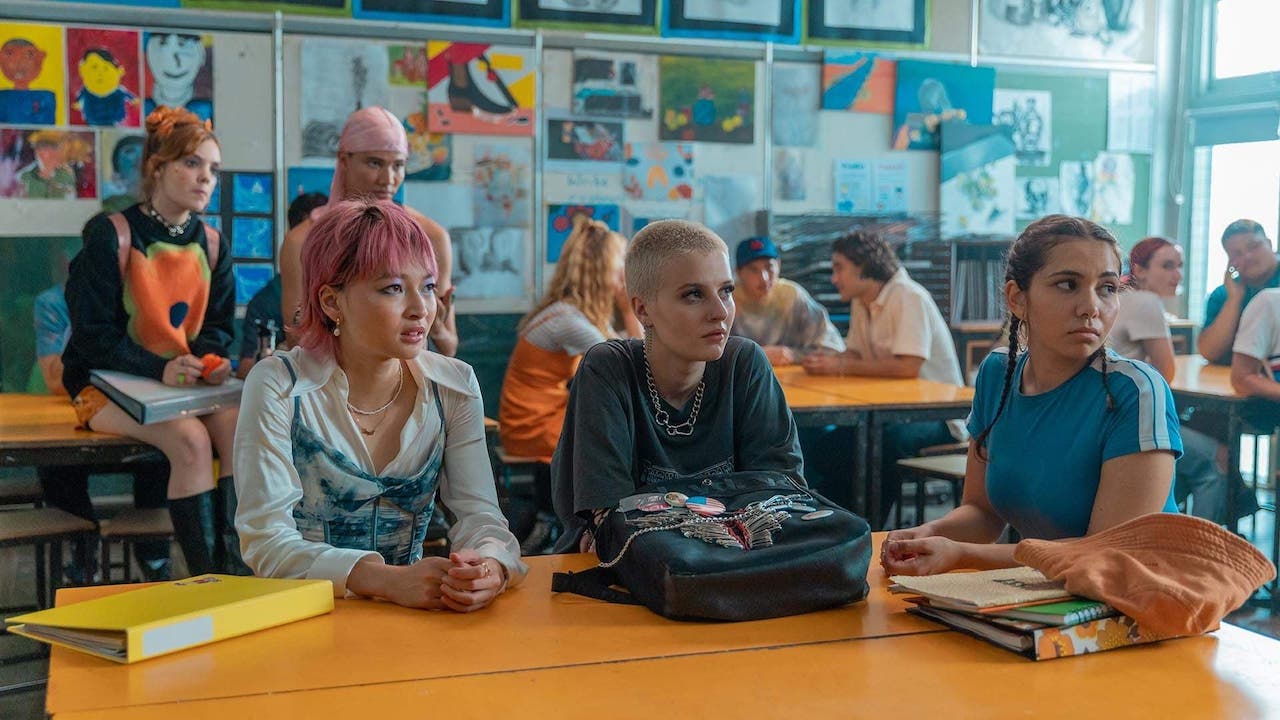New students, old problems: our first look at the Heartbreak High reboot

You can catch all the 90s grunge of Heartbreak High (as Cat Woods once enthusiastically did) on Netflix, but soon we’ll also get a fresh, contemporary reboot series: here’s what the new show has to live up to.
Is Nick going to actually do it with Jodie? Is Con really going to drop out? Is the hot new teacher really having an affair with Rivers? Will Bill fire her, or report her to police, or quietly sweep it under the carpet?
These were the dilemmas that drew a generation of Australian teenagers (and their curious younger siblings) to Heartbreak High in the mid-90s. As the new series of Heartbreak High finally hits our screens, the most prescient question is: why bring back a classic, rather than an entirely new concept?
The answer is not so succinct. But, in essence, trading on a known brand leverages the credibility of the original, and it may attract the parents or older siblings of the generation that the new Heartbreak High series is targeting. Amid cult favourites like Stranger Things, Euphoria and Gossip Girl, there’s a risk of any new, locally made series getting overlooked in favour of the hyped-up shows boasting Hollywood stars (Zendaya, Sydney Sweeney, Millie Bobby Brown, etc.) Heartbreak High 2022, much as the new Gossip Girl did, allows elements of the original to bleed into the new version, while establishing its own personality and plots.
Whether it works is going to be up to individual viewers, and I suspect this will be a generational and cultural question too. Did the original series accurately depict a first-generation Vietnamese Australian student, or an extended, multi-generational Greek family? I can only guess that it did, since that isn’t my lived experience. But it tried, and that was evident from the first series in 1994 through to the final seventh series in 1999.

It was groundbreaking in the sense that we had grown up on a diet of white, middle-class TV drama in the form of Neighbours and Home and Away, accustomed to seeing suburban, homogenic family-centred lives through the eyes of producers trying to sell their shows to British viewers. The neat, half-hourly episodes of teenage-friendly television care of Summer Bay and Ramsay Street only alluded to sex obliquely (and god forbid we saw anything more chaste than a kiss), nearly everyone was heterosexual, and problems were solved as soon as someone apologised. Until Heartbreak High.
For the first time on a day-time, mainstream TV series, Australian teenagers saw characters who looked and sounded like us, our families and our friends. Their dialogue was earthy and realistic, not the stilted and theatrical melodrama we’d become accustomed to. A few years ago, I interviewed an older man who casually mentioned he’d been a scriptwriter for Neighbours and it didn’t surprise me at all that a committee of middle-aged, middle-class, suburban-dwelling men were writing the dialogue of school kids.

Heartbreak High did more than deliver believable dialogue: it gave us Italian, Vietnamese, Salvadoran and Greek characters, representing the actual neighbourhoods most of us live in. It fleshed out the teachers’ personal lives with as much dedication and detail as it did the students, because teenagers are genuinely curious about the adults in our lives. We idolise them, or despise them, or lust after them, and these are realities that we want to see played out on screen, where the consequences of acting on any of those impulses keeps us compelled to watch, provoked and fascinated to our moral core.
The wailing guitars and synthesised percussion of the original series’ opening credits, the Doc Martens and school dresses that barely graze past the butt cheeks? It was a vision of high school that was relatable for me in the mid-90s of Melbourne. We were listening to Nirvana, getting our noses pierced, shopping at Dangerfield, sneaking out to full moon raves in secret locations, and gossiping about who the drama teacher may or may not be shagging after school. Weren’t we?
Does the new Heartbreak High reflect the reality of teenagers in 2022? I can’t tell you for sure—I can only guess. It revels in plots and predicaments that weren’t even on the radar in the mid-90s though, when dial-up modems and brick-sized mobile phones were a novelty.
This series will kickstart conversations, and its characters will become champions for teenagers who need to see themselves on screen, and that’s what the original did. Plus, nose-rings, nipple piercings, oversized band tees and Doc Martens are back, so perhaps it isn’t so far removed from the original in terms of fashion and music.

Amerie and Harper hook us in from the opening seconds. Quinni, Darren and Dusty are gorgeous, funny, complicated and clever. This show, as the original, provides a vehicle for teenagers to start conversations with their friends, their parents, or strangers on social media: about sexual consent, gender identity, monogamy, and the fractious nature of friendships.
Like Euphoria, the music and fashion (and often, the dialogue) seem to reflect the 40-something producers and writers, headed by creator Hannah Carroll Chapman (The Heights) rather than the teenagers themselves and the acting quality varies dramatically. But for the most part, it’s a winner.


















